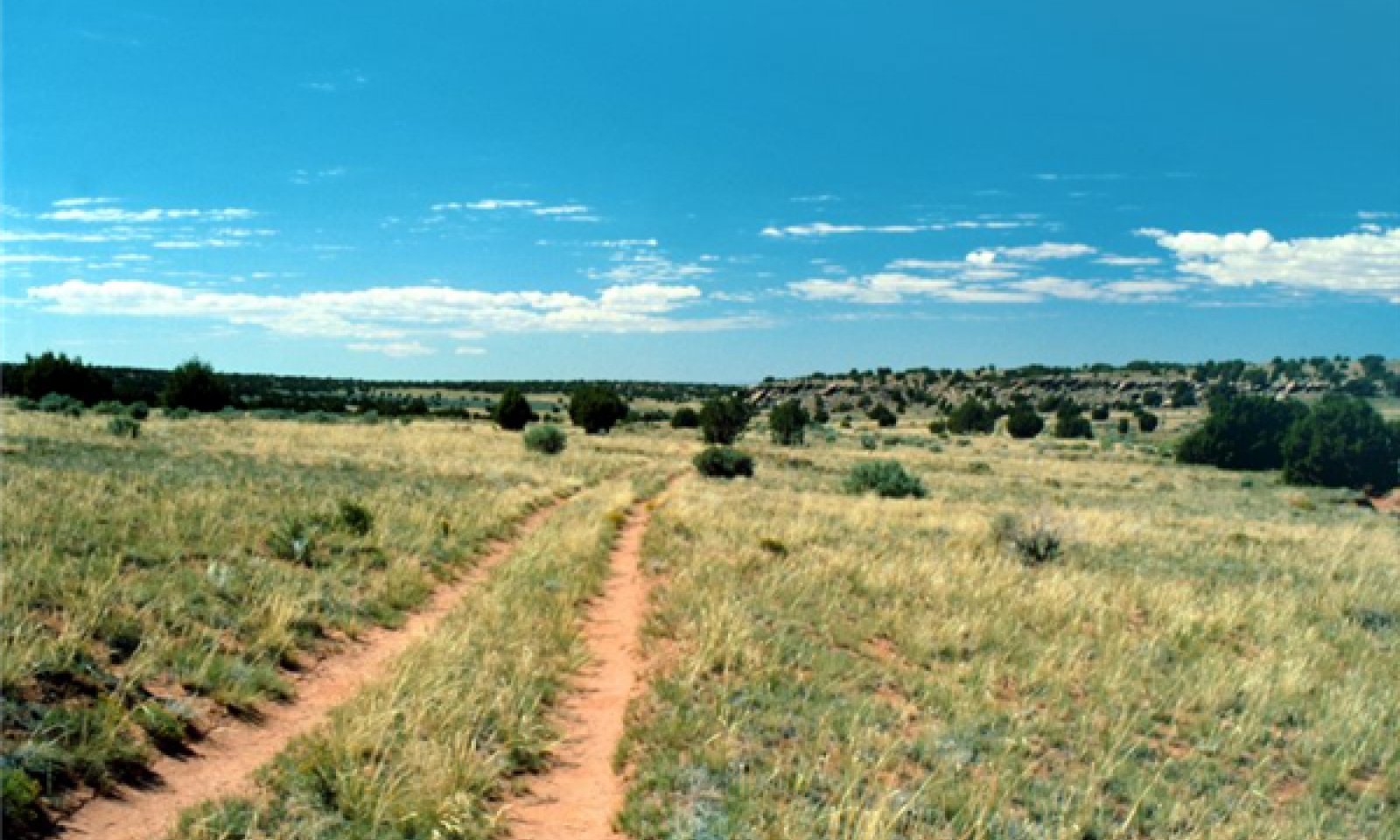

Natural Resources
Conservation Service
Ecological site R035XC313AZ
Loamy Upland 10-14" p.z.
Accessed: 11/24/2024
General information
Provisional. A provisional ecological site description has undergone quality control and quality assurance review. It contains a working state and transition model and enough information to identify the ecological site.
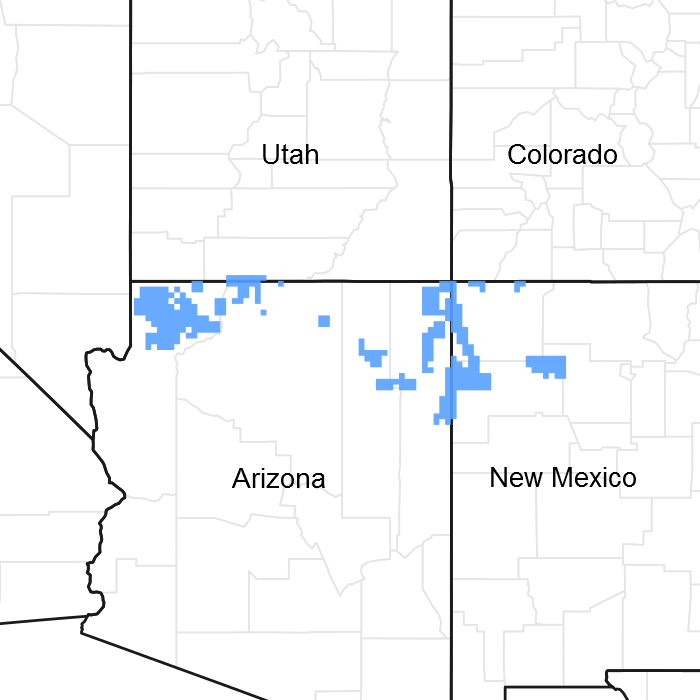
Figure 1. Mapped extent
Areas shown in blue indicate the maximum mapped extent of this ecological site. Other ecological sites likely occur within the highlighted areas. It is also possible for this ecological site to occur outside of highlighted areas if detailed soil survey has not been completed or recently updated.
MLRA notes
Major Land Resource Area (MLRA): 035X–Colorado Plateau
This ecological site is found in Common Resource Area 35.3 - the Colorado Plateau Sagebrush – Grasslands.
The Common Resource Area occurs within the Colorado Plateau Physiographic Province. It is characterized by a sequence of flat to gently dipping sedimentary rocks eroded into plateaus, valleys and deep canyons. Elevations range from 4800 to 6700 feet and precipitation averages 10 to 14 inches. The elevation range is lower (about 4500 to 6000 ) on the western side of the Colorado Plateau along the Grand Canyon, and moves up about 500 to 800 feet higher on the eastern side in the areas of the Navajo and Hopi Indian Reservations due to rain shadow effects from the Kaibab Plateau and Mogollon Rim. Common vegetation in this region includes Wyoming big sagebrush, Utah juniper, Colorado pinyon - cliffrose, Mormon tea, fourwing saltbush, blackbrush Indian ricegrass, needle and thread, western wheatgrass Galleta, black grama, blue grama, and sand dropseed. Sedimentary rock classes dominate the plateau with volcanic fields occurring for the most part near its margin. The soil temperature regime is mesic and the soil moisture regime is ustic aridic.
Table 1. Dominant plant species
| Tree |
Not specified |
|---|---|
| Shrub |
(1) Artemisia tridentata ssp. wyomingensis |
| Herbaceous |
(1) Pascopyrum smithii |
Physiographic features
This ecological site is found on plateaus fan terraces, and valley floors. The soil is deep to very deep to any plant root restricting layer. The soil surface texture ranges from very fine sandy loam to light sandy clay loam. Subsurface horizon textures are generally loam or clay loam, but range from sandy loam to clay. There is typically enough soil development to have accumlation of clays and/or carbonates (cabmic or argillic) at shallow depths within the soil profile. The soil surface and subsurface horizons may be slightly effervescent. Slopes are predominantly 0 to 15 percent, but occasionally reach 20 percent.
Table 2. Representative physiographic features
| Landforms |
(1)
Plateau
(2) Valley floor (3) Fan |
|---|---|
| Flooding frequency | None |
| Ponding frequency | None |
| Elevation | 1,463 – 2,042 m |
| Slope | 0 – 15% |
| Aspect | Aspect is not a significant factor |
Climatic features
Winter to summer moisture ratios range from 70:30 to 60:40. Late spring is usually the driest period, and early fall moisture can be sporadic. Summer rains fall from June through September; moisture originates in the Gulf of Mexico and creates convective, usually brief, intense thunderstorms. Cool season moisture from October through May tends to be frontal; it originates in the Pacific and the Gulf of California and falls in widespread storms with longer duration and lower intensity. Precipitation generally comes as snow from December through February. Accumulations above 12 inches are not common but can occur. Snow usually lasts for 3-4 days, but can persist much longer. Summer daytime temperatures are commonly 95 - 100 F and on occasion exceed 105 F. Winter air temperatures can regularly go below 10 F and have been recorded below - 20 F.
Table 3. Representative climatic features
| Frost-free period (average) | 168 days |
|---|---|
| Freeze-free period (average) | 193 days |
| Precipitation total (average) | 356 mm |
Figure 2. Monthly precipitation range
Figure 3. Monthly average minimum and maximum temperature
Influencing water features
The soil moisture on this ecological site comes from precipitation. The site does not benefit significantly from run-on moisture. The loamy surface texture of the soil allows the site to capture the majority of the winter storms and the light to moderate summer storms if the site has good vegetative cover. Intense summer thunderstorms will produce runoff, reducing the amount of effective rainfall.
Soil features
Soils grouped into this ecological site are generally deep to very deep, but may be moderately deep to any plant root restricting layer. The soil surface texture ranges from very fine sandy loam to light sandy clay loam. Subsurface horizon textures are generally loam or clay loam, but range from sandy loam to clay. The soil surface may be slightly effervescent. Subsurface horizons range from slightly to strongly effervescent. Soil reaction is neutral to moderately alkaline (pH 7.0-8.4). Water erosion hazard is moderate to severe.
Soil survey map unit components that have been correlated to this ecological site description include:
SSA 623 Shivwits Area: MU's 8 Barx, 9 Barx & Strych, 11 Bisoodi, 46 Strych, 51 Strych, 61 Spenlo, 73 Strych;
SSA 625 Mohave County Area NE part: MU's 3 Barx, 30 Anasazi, 31 Barx, 39 Milok, 40, 41 & 49 Moab;
SSA 629 Coconino County North Kaibab part: MU's 4 Barx & 46 Strych;
SSA 701 Grand Canyon Area: MU's 26 Lapoint family, 99 Progresso family, 152 Ustic haplocambids & 156 Ustic torriorthents;
SSA 707 Little Colorado River Area: MU 39 Progresso;
SSA 711 Navajo Mountain Area: MU 33 Begay;
SSA 712 Canyon de Chelly NM: MU 15 Querencia family;
SSA 713 Chinle Area: MU's 4-Aquima, 8-Begay loam, 11-Querencia, 48-Begay
SSA 715 Fort Defiance Area AZ/NM: MU's 9 Barx, 10, 27 & 28 Doakum family, 18 Blancot family, 25 & 26 Doakum & Gapmesa, 37 & 59 Mentmore family, Querencia;
SSA 717 Shiprock Area AZ/NM: MU's 302 & 316 Doakum, 310 & 312 Blanding.
Table 4. Representative soil features
| Parent material |
(1)
Residuum
–
calcareous sandstone
(2) Alluvium – limestone and sandstone |
|---|---|
| Surface texture |
(1) Very fine sandy loam (2) Gravelly loam (3) Sandy clay loam |
| Family particle size |
(1) Loamy |
| Drainage class | Well drained |
| Permeability class | Slow to moderately slow |
| Soil depth | 102 – 203 cm |
| Surface fragment cover <=3" | 0 – 10% |
| Surface fragment cover >3" | 0 – 10% |
| Available water capacity (0-101.6cm) |
16.26 – 23.11 cm |
| Calcium carbonate equivalent (0-101.6cm) |
10 – 26% |
| Electrical conductivity (0-101.6cm) |
0 – 2 mmhos/cm |
| Sodium adsorption ratio (0-101.6cm) |
0 |
| Soil reaction (1:1 water) (0-101.6cm) |
7 – 8.4 |
| Subsurface fragment volume <=3" (Depth not specified) |
0 – 10% |
| Subsurface fragment volume >3" (Depth not specified) |
0 – 10% |
Ecological dynamics
An ecological site is not a precise assemblage of species for which the proportions are the same from place to place or from year to year. In all plant communities, variability is apparent in productivity and occurrence of individual species. Spatial boundaries of the communities; however, can be recognized by characteristic patterns of species composition, association, and community structure. The historic climax plant community for this ecological site has been described by sampling relict or relatively undisturbed sites and/or reviewing historic records. The historic climax plant community is the plant community that evolved over time with the soil forming process and long term changes in climatic conditions of the area. It is the plant community that was best adapted to the unique combination of environmental factors associated with the site.
Natural disturbances, such as drought, fire, grazing of native fauna, and insects, are inherent in the development and maintenance of these plant communities. The effects of these disturbances are part of the range of characteristics of the ecological site. Fluctuations in plant community structure and function caused by the effects of natural disturbances help establish the boundaries and characteristics of an ecological site. They are accounted for as part of the range of characteristics of the ecological site. Recognizable plant community phases are identified in the reference state of the ecological site. Some sites may have a small range of variation, while others have a large range. Some plant community phases may exist for long periods of time, while others may only occur for a couple of years after a disturbance.
Deterioration of the plant community, hydrology, or soil site stability on an ecological site can result in crossing a threshold or potentially irreversible boundary to another state, or equilibrium. This can occur as a result of the loss of soil surface through erosion, the loss of the stability of the site due to disturbances that cause active erosion on the site, increases in the amounts and/or patterns or runoff from rainstorms, changes in availability of surface and subsurface water, significant changes in plant structural and functional types, or the introduction of non-native species. When these thresholds are crossed, the potential of the ecological site to return to the historic climax plant community can be lost, or restoration will require significant inputs . There may be multiple states possible for an ecological site, determined by the type and or severity of disturbance.
The known states and transition pathways for this ecological site are described in the state and transition model. Within each state, there may be one or more known plant community phases. These community phases describe the different plant community that can be recognized and mapped across this ecological site. The state and transition model is intended to help land users recognize the current plant community on the ecological site, and the management options for improving the plant community to the desired plant community.
Plant production data provided in this site description is standardized to the air-dry weight of one year's growth. The plant communities described in this site description are based on near normal rainfall years.
State and transition model
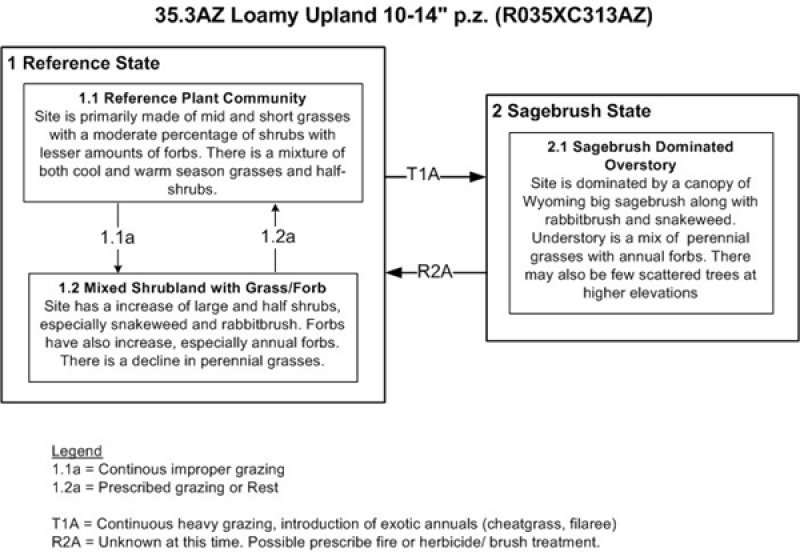
Figure 4. State and Transition Model - R035XC313AZ
More interactive model formats are also available.
View Interactive Models
More interactive model formats are also available.
View Interactive Models
Click on state and transition labels to scroll to the respective text
Ecosystem states
State 1 submodel, plant communities
State 2 submodel, plant communities
State 1
Reference State
Community 1.1
Historic Climax Plant Community

Figure 5. 35.3 Loamy Upland Historic Climax Plant Community
This site has a plant community made up primarily of mid and short grasses with a moderate amount of shrubs. In the original plant community there is a mixture of both cool season and warm season plants. Plants most likly to invade on this site are big sagebrush, snakeweed, rabbitbrush, juniper and annuals.
Figure 6. Annual production by plant type (representative values) or group (midpoint values)
Table 5. Annual production by plant type
| Plant type | Low (kg/hectare) |
Representative value (kg/hectare) |
High (kg/hectare) |
|---|---|---|---|
| Grass/Grasslike | 448 | 588 | 729 |
| Shrub/Vine | 112 | 112 | 280 |
| Forb | 22 | 56 | 95 |
| Tree | – | 28 | 56 |
| Total | 582 | 784 | 1160 |
Figure 7. Plant community growth curve (percent production by month). AZ3531, 35.3 10-14" p.z. all sites. Growth begins in the spring and continues through the summer..
| Jan | Feb | Mar | Apr | May | Jun | Jul | Aug | Sep | Oct | Nov | Dec |
|---|---|---|---|---|---|---|---|---|---|---|---|
| J | F | M | A | M | J | J | A | S | O | N | D |
| 0 | 1 | 3 | 17 | 18 | 10 | 19 | 20 | 10 | 1 | 1 | 0 |
Community 1.2
Mixed Shrubland with Grass/Forbs

Figure 8. 35.3 LoamyUpland 1.2 Mixed Shrubland with Grass/Forb
The plant community is mix of large and half shrubs and perennial grasses. There is decline of cool season grasses and a increase of warm season grasses and annual forbs. Common shrubs are Wyoming big sagebrush, snakeweed, rabbitbrush. Blue grama, galleta, Indian ricegrass, squirreltail, and sand dropseed are the common grasses and western wheatgrass/muttongrass may be present but is greatly reduced.
Pathway 1.1a
Community 1.1 to 1.2


Continous improper grazing
Pathway 1.2a
Community 1.2 to 1.1


Prescribed grazing or Rest
State 2
Sagebrush State
This state is characterized by a canopy dominated by sagebrush with a rabbitbrush and snakeweed. The understory is a mix of warm and cool season grasses along with annuals forbs.
Community 2.1
Sagebrush Domninated Overstory
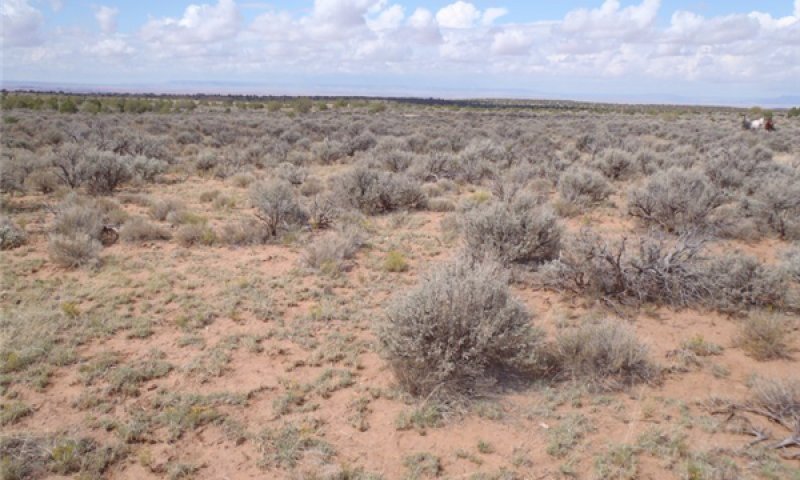
Figure 9. 35.3 Loamy Upland Community Phase 2.1
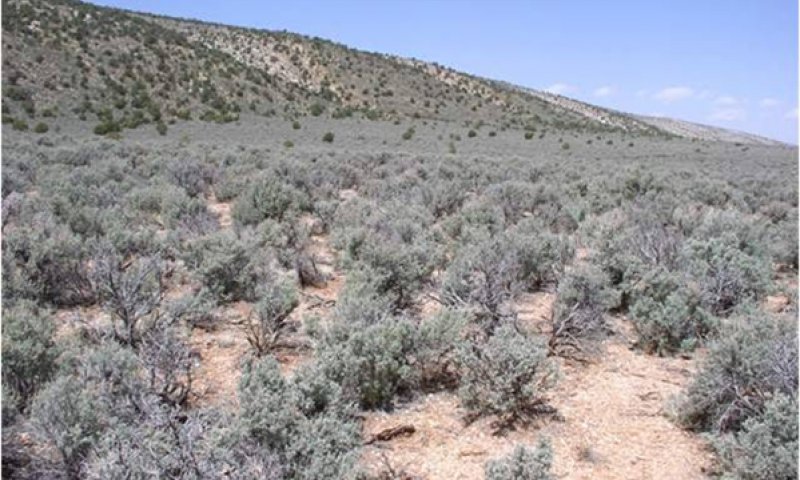
Figure 10. Sagebrush Dominated
This plant community is characterized by a dominance of Wyoming big sagebrush with scattered snakeweed/rabbitbrush. Understory is scattered with perennial snakeweed and annual forbs. This plant community has a small percentage of introduced exotics that are established in the understory. This plant community may also have scattered junipers.
Transition R2A
State 2 to 1
This transition is possible , but the treatments or practices necessary for this pathway may be a combination of prescribed grazing or Rest with brush/herbicide treatments.
Additional community tables
Table 6. Community 1.1 plant community composition
| Group | Common name | Symbol | Scientific name | Annual production (kg/hectare) | Foliar cover (%) | |
|---|---|---|---|---|---|---|
|
Grass/Grasslike
|
||||||
| 1 | Dominant Perennial Grasses | 336–616 | ||||
| blue grama | BOGR2 | Bouteloua gracilis | 168–280 | – | ||
| western wheatgrass | PASM | Pascopyrum smithii | 168–280 | – | ||
| Indian ricegrass | ACHY | Achnatherum hymenoides | 112–202 | – | ||
| James' galleta | PLJA | Pleuraphis jamesii | 67–140 | – | ||
| 2 | Other Grasses | 112–280 | ||||
| muttongrass | POFE | Poa fendleriana | 45–95 | – | ||
| squirreltail | ELELE | Elymus elymoides ssp. elymoides | 45–95 | – | ||
| needle and thread | HECOC8 | Hesperostipa comata ssp. comata | 45–95 | – | ||
| ring muhly | MUTO2 | Muhlenbergia torreyi | 0–34 | – | ||
| Grass, perennial | 2GP | Grass, perennial | 0–34 | – | ||
| Fendler's threeawn | ARPUF | Aristida purpurea var. fendleriana | 0–34 | – | ||
| sand dropseed | SPCR | Sporobolus cryptandrus | 0–34 | – | ||
| Grass, annual | 2GA | Grass, annual | 0–11 | – | ||
|
Forb
|
||||||
| 3 | Forbs | 22–95 | ||||
| needle and thread | HECOC8 | Hesperostipa comata ssp. comata | 47–95 | – | ||
| Forb, annual | 2FA | Forb, annual | 0–47 | – | ||
| Forb, perennial | 2FP | Forb, perennial | 0–47 | – | ||
| milkvetch | ASTRA | Astragalus | 0–47 | – | ||
| buckwheat | ERIOG | Eriogonum | 0–47 | – | ||
| lupine | LUPIN | Lupinus | 0–47 | – | ||
| ragwort | SENEC | Senecio | 0–47 | – | ||
| globemallow | SPHAE | Sphaeralcea | 0–47 | – | ||
|
Shrub/Vine
|
||||||
| 4 | Dominant Shrubs | 56–224 | ||||
| Indian ricegrass | ACHY | Achnatherum hymenoides | 47–191 | – | ||
| Wyoming big sagebrush | ARTRW8 | Artemisia tridentata ssp. wyomingensis | 56–140 | – | ||
| fourwing saltbush | ATCA2 | Atriplex canescens | 56–140 | – | ||
| 5 | Other Shrubs | 56–168 | ||||
| jointfir | EPHED | Ephedra | 11–95 | – | ||
| squirreltail | ELELE | Elymus elymoides ssp. elymoides | 47–95 | – | ||
| broom snakeweed | GUSA2 | Gutierrezia sarothrae | 11–45 | – | ||
| desert-thorn | LYCIU | Lycium | 11–45 | – | ||
| pricklypear | OPUNT | Opuntia | 11–45 | – | ||
| yucca | YUCCA | Yucca | 11–45 | – | ||
| algerita | MATR3 | Mahonia trifoliolata | 0–28 | – | ||
|
Tree
|
||||||
| 6 | Trees | 0–56 | ||||
| blue grama | BOGR2 | Bouteloua gracilis | 143–286 | – | ||
| juniper | JUNIP | Juniperus | 0–56 | – | ||
| twoneedle pinyon | PIED | Pinus edulis | 0–56 | – | ||
Interpretations
Animal community
This site is suitable for grazing throughout most of the year, with shrubs providing forage when snow covers palatable grasses.
In excellent condition, this site provides some food for wildlife, mostly as early green forage. When pinyon and juniper are found on the site, it becomes more desireable due to more habitat diversity.
Recreational uses
This site occurs as undulating plateaus or entrenched swales. It supports a grassland-shrub complex, often with a few junipers and pinyon. Winters are cold and spring is typically very windy. Late spring, summer and fall provide the most attractive recreational weather for sport hunting, wildlife observation, photography and cross-country riding.
Supporting information
Other references
Interagency Technical Assistance Agreement between the Bureau of Indian Updates and revisions for this ESD were conducted as part of a 2007-2012 Affairs–Navajo Region and the NRCS-Arizona.
Contributors
Ken Gishi
Larry D. Ellicott
Stephen Cassady
Unknown
Rangeland health reference sheet
Interpreting Indicators of Rangeland Health is a qualitative assessment protocol used to determine ecosystem condition based on benchmark characteristics described in the Reference Sheet. A suite of 17 (or more) indicators are typically considered in an assessment. The ecological site(s) representative of an assessment location must be known prior to applying the protocol and must be verified based on soils and climate. Current plant community cannot be used to identify the ecological site.
| Author(s)/participant(s) | Steve Cassady, Kyle Spencer, Tobiah Salvail |
|---|---|
| Contact for lead author | NRCS State Rangeland Management Specialist, Phoenix AZ |
| Date | 04/30/2008 |
| Approved by | |
| Approval date | |
| Composition (Indicators 10 and 12) based on | Annual Production |
Indicators
-
Number and extent of rills:
None. -
Presence of water flow patterns:
Water flow patterns are noticeable, but are widely scattered, short (< 10 feet), and erratic. -
Number and height of erosional pedestals or terracettes:
No pedestalling, but mounding underneath long-lived shrubs is common as is turf building of ½ to 1 inch in blue grama rings. -
Bare ground from Ecological Site Description or other studies (rock, litter, lichen, moss, plant canopy are not bare ground):
Bare ground is < or = 55 percent. -
Number of gullies and erosion associated with gullies:
None -
Extent of wind scoured, blowouts and/or depositional areas:
None -
Amount of litter movement (describe size and distance expected to travel):
Herbaceous litter may move several feet in larger storm events. -
Soil surface (top few mm) resistance to erosion (stability values are averages - most sites will show a range of values):
The soil surface is protected by a surface cover of gravel (10 percent) and cryptogams (5 to 10 percent). This combined with the soils ability to cap or crust over provides protection against erosion. -
Soil surface structure and SOM content (include type of structure and A-horizon color and thickness):
The soil surface is protected by a surface cover of gravel (10 percent) and cryptogams (5 to 10 percent). This combined with the soils ability to cap or crust over provides protection against erosion. -
Effect of community phase composition (relative proportion of different functional groups) and spatial distribution on infiltration and runoff:
Randomly scattered plants consisting of about 75 percent grasses, 15 percent shrubs and 10 percent forbs promote infiltration and reduce runoff. The average distance to the nearest perennial plant (fetch) is 5 to 7 inches, with the majority ranging from 2 to 10 inches, but occasionally as far as 15 inches. -
Presence and thickness of compaction layer (usually none; describe soil profile features which may be mistaken for compaction on this site):
None. The percent gravel increases at about 5 inches. -
Functional/Structural Groups (list in order of descending dominance by above-ground annual-production or live foliar cover using symbols: >>, >, = to indicate much greater than, greater than, and equal to):
Dominant:
Grasses (70 to 80%) >> Shrubs (15 to 20%) > Forbs (5 to 10%)Sub-dominant:
Other:
Additional:
-
Amount of plant mortality and decadence (include which functional groups are expected to show mortality or decadence):
Expect to observe dead centers in blue grama and bottlebrush squirreltail and up to 5 percent mortality of Wyoming big sagebrush, more in extended drought. -
Average percent litter cover (%) and depth ( in):
-
Expected annual annual-production (this is TOTAL above-ground annual-production, not just forage annual-production):
Average annual production on this site is expected to be 800 to 900 lbs/ac. in a year of average annual precipitation. -
Potential invasive (including noxious) species (native and non-native). List species which BOTH characterize degraded states and have the potential to become a dominant or co-dominant species on the ecological site if their future establishment and growth is not actively controlled by management interventions. Species that become dominant for only one to several years (e.g., short-term response to drought or wildfire) are not invasive plants. Note that unlike other indicators, we are describing what is NOT expected in the reference state for the ecological site:
Cheatgrass (Bromus tectorum) is commonly found in small amounts on the site (< 2 percent). During years of above average winter and spring moisture the composition of this may increase slightly. Severe disturbance may cause an increase in this or other invasive plants creating a potential for a shortened fire frequency on the site which could result in crossing a threshold to a state with increased introduced annual plants and fewer native shrubs. -
Perennial plant reproductive capability:
All plants native to this site are adapted to the climate and are capable of producing seeds, stolons, and/or rhizomes except during the most severe droughts.
Print Options
Sections
Font
Other
The Ecosystem Dynamics Interpretive Tool is an information system framework developed by the USDA-ARS Jornada Experimental Range, USDA Natural Resources Conservation Service, and New Mexico State University.
Click on box and path labels to scroll to the respective text.